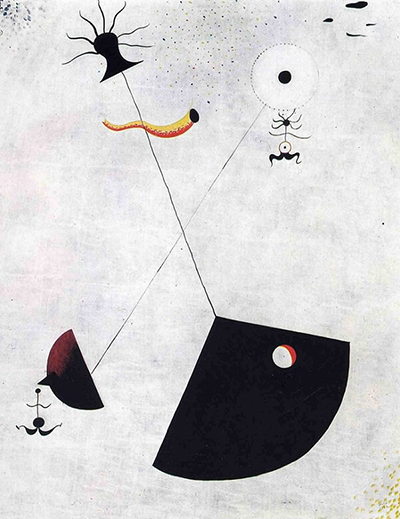Maternity, a painting from 1924 by Joan Miro, is a very precise design which much more formulated than some of his more automatic pieces. It can be found at the Scottish National Gallery Of Modern Art.
The single-word title of Maternity immediately sets us off with curiosity as to how this theme is found in the composition. Upon first inspection, there is a small black element near the top of the canvas which appears to be the shape of a head with neck. The wavy lines which make their way from it could easily, therefore, be human hair. Assuming this to be a correct judgement, we can then put the rest together in our heads, with a long line constructing the torso, with arms created from the line that cuts across, and circles producing the hands. The lower half is abrupt and refers directly to the process mentioned in the title. We find a small comet-like shape that is harder to determine, but we may refer to Landscape (The Hare) for a clue, as it is used there as well.
The original artwork measures 92.10cm long by 73.10cm wide, though is a little wider in its current frame. Visitors to the Scottish National Gallery Of Modern Art will find that this is a key component of an excellent selection of art from the 20th century, which includes a number of other notable names such as Francis Bacon, David Hockney, Andy Warhol, Salvador Dalí, René Magritte and Alberto Giacometti. It is considered amongst the finest modern art galleries in the UK and is situated in the city of Edinburgh, a cultural location which also has a number of other institutions that cover other artistic periods. The UK as a whole has amongst the finest collections in Europe, thanks to some inspired collections from centuries-past as a part of the wealthy empire and also the ongoing efforts to keep the existing items protected for the state.




